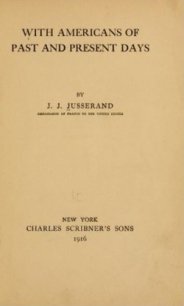Deception Point - Brown Dan (книга бесплатный формат .TXT) 📗
"So how does this glacier look?"
"Flawless," Norah said. "A perfect, solid slab. No fault lines or glacial turnover. This meteorite is what we call a 'static fall.' It's been in the ice untouched and unaffected since it landed in 1716."
Rachel did a double take. "You know the exact year it fell?"
Norah looked surprised by the question. "Hell, yes. That's why they called me in. I read ice." She motioned to a nearby pile of cylindrical tubes of ice. Each looked like a translucent telephone pole and was marked with a bright orange tag. "Those ice cores are a frozen geologic record." She led Rachel over to the tubes. "If you look closely you can see individual layers in the ice."
Rachel crouched down and could indeed see that the tube was made up of what appeared to be strata of ice with subtle differences in luminosity and clarity. The layers varied between paper thin to about a quarter of an inch thick.
"Each winter brings a heavy snowfall to the ice shelf," Norah said, "and each spring brings a partial thaw. So we see a new compression layer every season. We simply start at the top-the most recent winter-and count backward."
"Like counting rings on a tree."
"It's not quite that simple, Ms. Sexton. Remember, we're measuring hundreds of feet of layerings. We need to read climatological markers to benchmark our work-precipitation records, airborne pollutants, that sort of thing."
Tolland and the others joined them now. Tolland smiled at Rachel. "She knows a lot about ice, doesn't she?"
Rachel felt oddly happy to see him. "Yeah, she's amazing."
"And for the record," Tolland nodded, "Dr. Mangor's 1716 date is right on. NASA came up with the exact same year of impact well before we even got here. Dr. Mangor drilled her own cores, ran her own tests, and confirmed NASA's work."
Rachel was impressed.
"And coincidentally," Norah said, "1716 is the exact year early explorers claimed to have seen a bright fire-ball in the sky over northern Canada. The meteor became known as the Jungersol Fall, after the name of the exploration's leader."
"So," Corky added, "the fact that the core dates and the historic record match is virtual proof that we're looking at a fragment of the same meteorite that Jungersol recorded seeing in 1716."
"Dr. Mangor!" one of the NASA workers called out "Leader hasps are starting to show!"
"Tour's over, folks," Norah said. "Moment of truth." She grabbed a folding chair, climbed up onto it, and shouted out at the top of her lungs. "Surfacing in five minutes, everyone!"
All around the dome, like Pavlovian dogs responding to a dinner bell, the scientists dropped what they were doing and hurried toward the extraction zone.
Norah Mangor put her hands on her hips and surveyed her domain. "Okay, let's raise the Titanic."
28
"Step aside!" Norah hollered, moving through the growing crowd. The workers scattered. Norah took control, making a show of checking the cable tensions and alignments.
"Heave!" one of the NASA men yelled. The men tightened their winches, and the cables ascended another six inches out of the hole.
As the cables continued to move upward, Rachel felt the crowd inching forward in anticipation. Corky and Tolland were nearby, looking like kids at Christmas. On the far side of the hole, the hulking frame of NASA administrator Lawrence Ekstrom arrived, taking a position to watch the extraction.
"Hasps!" one of the NASA men yelled. "Leaders are showing!"
The steel cables rising through the boreholes changed from silver braid to yellow leader chains.
"Six more feet! Keep it steady!"
The group around the scaffolding fell into a rapt silence, like onlookers at a seance awaiting the appearance of some divine specter-everyone straining for the first glimpse.
Then Rachel saw it.
Emerging from the thinning layer of ice, the hazy form of the meteorite began to show itself. The shadow was oblong and dark, blurry at first, but getting clearer every moment as it melted its way upward.
"Tighter!" a technician yelled. The men tightened the winches, and the scaffolding creaked.
"Five more feet! Keep the tension even!"
Rachel could now see the ice above the stone beginning to bulge upward like a pregnant beast about to give birth. Atop the hump, surrounding the laser's point of entry, a small circle of surface ice began to give way, melting, dissolving into a widening hole.
"Cervix is dilated!" someone shouted. "Nine hundred centimeters!"
A tense laughter broke the silence.
"Okay, kill the laser!"
Someone threw a switch, and the beam disappeared.
And then it happened.
Like the fiery arrival of some paleolithic god, the huge rock broke the surface with a hiss of steam. Through the swirling fog, the hulking shape rose out of the ice. The men manning the winches strained harder until finally the entire stone broke free of the frozen restraints and swung, hot and dripping, over an open shaft of simmering water.
Rachel felt mesmerized.
Dangling there on its cables, dripping wet, the meteorite's rugged surface glistened in the fluorescent lights, charred and rippled with the appearance of an enormous petrified prune. The rock was smooth and rounded on one end, this section apparently blasted away by friction as it streaked through the atmosphere.
Looking at the charred fusion crust, Rachel could almost see the meteor rocketing earthward in a furious ball of flames. Incredibly, that was centuries ago. Now, the captured beast hung there on its cables, water dripping from its body.
The hunt was over.
Not until this moment had the drama of this event truly struck Rachel. The object hanging before her was from another world, millions of miles away. And trapped within it was evidence-no, proof-that man was not alone in the universe.
The euphoria of the moment seemed to grip everyone at the same instant, and the crowd broke into spontaneous hoots and applause. Even the administrator seemed caught up in it. He clapped his men and women on the back, congratulating them. Looking on, Rachel felt a sudden joy for NASA. They'd had some tough luck in the past. Finally things were changing. They deserved this moment.
The gaping hole in the ice now looked like a small swimming pool in the middle of the habisphere. The surface of the two-hundred-foot-deep pool of melted water sloshed for a while against the icy walls of the shaft and then finally grew calm. The waterline in the shaft was a good four feet beneath the glacier's surface, the discrepancy caused by both the removal of the meteorite's mass and ice's property of shrinking as it melts.
Norah Mangor immediately set up SHABA pylons all around the hole. Although the hole was clearly visible, any curious soul who ventured too close and accidentally slipped in would be in dire jeopardy. The walls of the shaft were solid ice, with no footholds, and climbing out unassisted would be impossible.
Lawrence Ekstrom came padding across the ice toward them. He moved directly to Norah Mangor and shook her hand firmly. "Well done, Dr. Mangor."
"I'll expect lots of praise in print," Norah replied.
"You'll get it." The administrator turned now to Rachel. He looked happier, relieved. "So, Ms. Sexton, is the professional skeptic convinced?"
Rachel couldn't help but smile. "Stunned is more like it."
"Good. Then follow me."
Rachel followed the administrator across the habisphere to a large metal box that resembled an industrial shipping container. The box was painted with military camouflage patterns and stenciled letters: P-S-C.
"You'll call the President from in here," Ekstrom said.
Portable Secure Comm, Rachel thought. These mobile communications booths were standard battlefield installations, although Rachel had never expected to see one used as part of a peacetime NASA mission. Then again, Administrator Ekstrom's background was the Pentagon, so he certainly had access to toys like this. From the stern faces on the two armed guards watching over the PSC, Rachel got the distinct impression that contact with the outside world was made only with express consent from Administrator Ekstrom.




